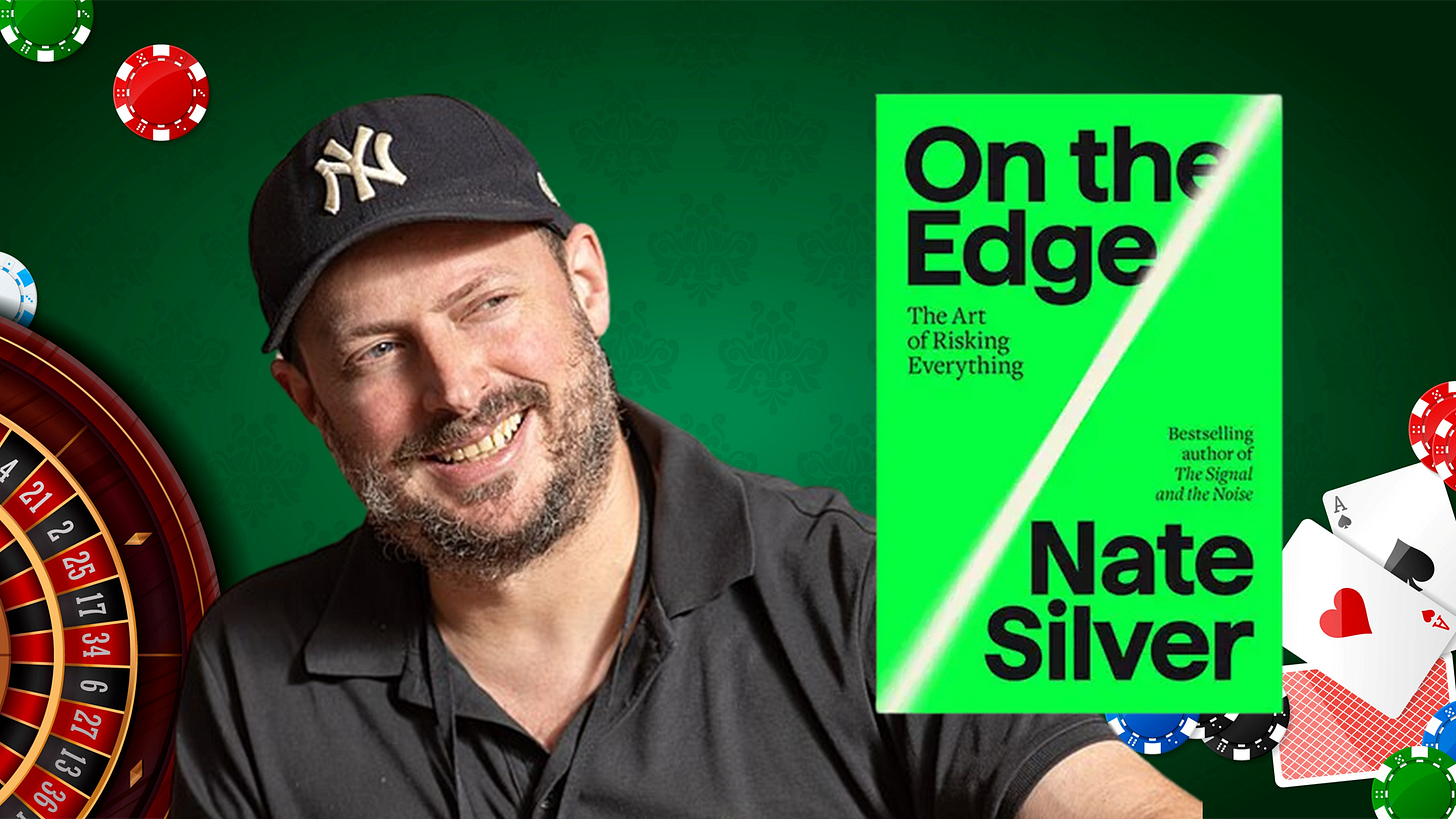Silver’s Edgy Lesson: Risk Is a Skill, Not a Gamble
Nate Silver's On the Edge shows why thriving in uncertainty is a skill and why most people and institutions still get it wrong.
If you’re a political junkie like me, you know – or knew – FiveThirtyEight, the statistical news and analysis site that aggregated polling data, filtered it through proprietary models, and provided different perspectives on political trends and the futures of politicians across the country – most notably the presidency.
FiveThirtyEight, shut down earlier this year by its parent company, ABC News, and its founder, Nate Silver, became a sensation during the 2012 presidential campaign by offering realistic and rational insights into the prospects of incumbent President Barack Obama and Republican challenger Mitt Romney. It was the 2016 campaign, however, that drew widespread criticism. Silver and FiveThirtyEight projected that Democratic candidate Hillary Clinton had a 3-to-1 chance of defeating Republican candidate Donald Trump. When Trump narrowly won the Electoral College, critics accused Silver of malpractice for getting the outcome “wrong.”
In his defense, Silver — who now writes the Silver Bulletin — leaned on statistical probability, correctly noting that he never said Clinton would win–only that she had more likely paths to victory than Trump. But as the election results proved, Trump found a seam and exploited it, overcoming the odds to claim the presidency.
These kinds of upsets occur frequently in sports and gambling, which is why Silver, a professional poker player and sports bettor, based his latest book, On The Edge: The Art of Risking Everything, on cards and wagering. Ostensibly, the book is about risk – understanding it, taking it, and managing it in the face of incomplete information. But in the process of defining risk through the lens of gambling and describing different types of players, Silver also reveals a lot about the world around us.
On the Edge is a compelling narrative about how people navigate uncertainty in a world that both rewards and punishes risk. Drawing on his background in poker, forecasting, and data science, Silver crafts a story that explores what it means to bet on the unknown – and why some people are better at it than others.
At the heart of the book is a conceptual divide between two worlds. On one side lies what Silver calls “The River,” aptly named after the fifth and final card dealt in Texas Hold’em. It’s a domain inhabited by gamblers, founders, venture capitalists, and others who make high-stakes decisions using data, probability, and instinct. These individuals embrace uncertainty, relying on expected value calculations and an ability to make peace with incomplete information. They don’t just tolerate risk – they seek it out, provided the odds are favorable.
Opposite the River, people are “The Villagers” – academics, bureaucrats, journalists, and institutional thinkers who prioritize caution, consensus, and tradition. Villagers are suspicious of outlier thinking and often prefer rules and processes over experimentation and disruption. They’re not necessarily wrong, Silver implies – but the safety of consensus usually constrains them.
This tension between Riverians and Villagers becomes the central lens through which Silver examines everything, from poker strategy to tech entrepreneurship, political forecasting, and cryptocurrency markets. He recounts the spectacular rise and fall of figures like Sam Bankman-Fried as cautionary tales – examples of when risk ceases to be calculated and becomes reckless.
But Silver doesn’t romanticize risk for its own sake. Through profiles and case studies, he shows that the most successful Riverians are those who think probabilistically, apply strategic empathy, and maintain discipline when the stakes are high. Risk, he argues, isn’t an adrenaline rush or a personality trait – it’s a process rooted in math, mindset, and method.
As the narrative unfolds, On the Edge becomes a meditation on how modern society values risk and who gets to take it. Silver challenges readers to consider whether institutions reward the right kind of thinking or whether they push capable decision-makers to the margins. It’s a provocative question with no easy answer.
Numerous case studies, sidebars, and interviews punctuate the book’s points. These are not marginal examples. Silver discusses the stakes and mistakes of figures like Bankman-Fried, the disgraced cryptocurrency mogul convicted of fraud, conspiracy, and money laundering related to the collapse of his FTX exchange. He also profiles the calculated risks of Sand Hill Road venture capitalists, the eccentric strategies of Elon Musk, and the visionary bets of OpenAI’s Sam Altman, offering both cautionary and aspirational insights.
Silver leaves readers with more than a taxonomy of risk-takers. He offers a call to think more like a Riverian – not necessarily to take more risks, but to understand them better. In a world where uncertainty is the norm, On the Edge argues that mastering the art of risk is no longer optional. It’s essential.
I'm on a mission to read 50 books in 2025. This is the 31st book in my journey. What books are you reading? What books should I read? Share your thoughts in the comments or message me. All thoughts and suggestions are welcomed.



